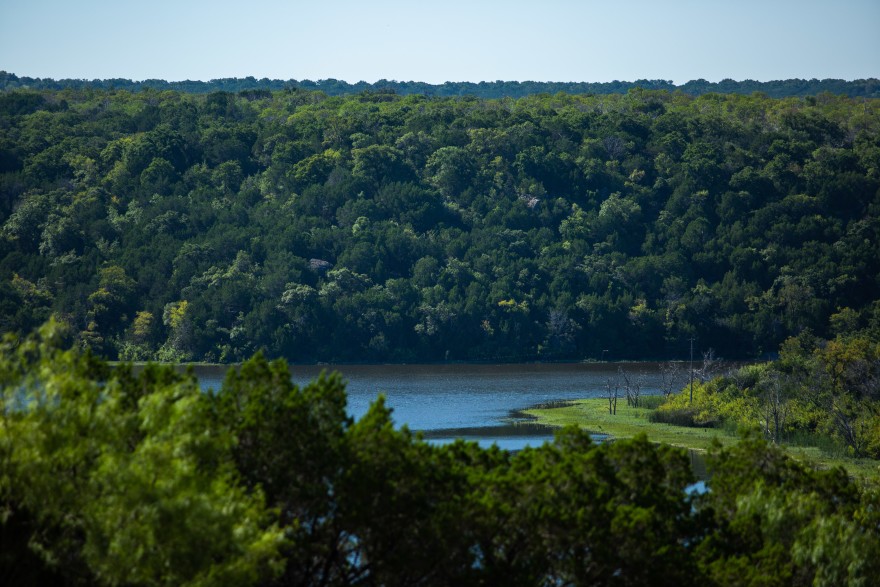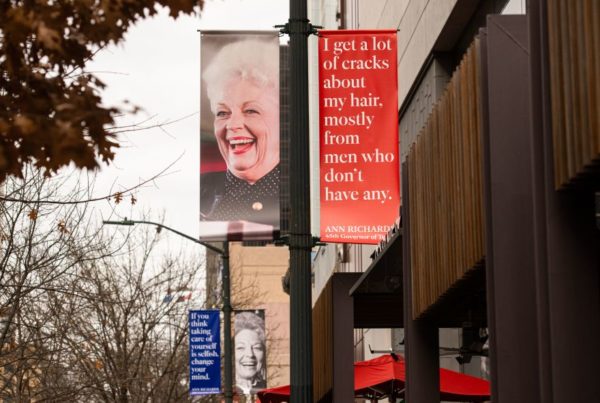From KERA:
The story of Palo Pinto Mountains State Park begins with a shooting.
In 2008, Will Copeland shot and killed Kevin Parsons at the Mule Lip Bar in Mingus, Texas. Copeland signed over more than 1,000 acres of ranch land to Parsons’ father as part of a wrongful death lawsuit.
The Nature Conservancy bought that land and other nearby tracts on behalf of the parks department, and Palo Pinto Mountains State Park was born. Halfway between Abilene and Fort Worth, Palo Pinto will be the first new state park in North Texas to open in more than 20 years.
That first purchase happened a decade ago, and the park is finally taking shape. Construction began earlier this year. It’s expected to open in 2023, in time for the state parks centennial.
‘Getting To Share This Part Of Texas & How Beautiful It Is’
“I grew up just down the road in Mineral Wells, so what excites me is getting to share this area with other people — getting to share this part of Texas and how beautiful it is,” Park Superintendent James Adams said.
Adams has worked for the parks department for years, and he’s excited to be part of a legacy at Palo Pinto.
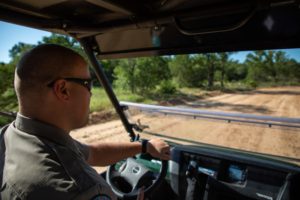
Palo Pinto Mountains State Park Superintendent James Adams takes KERA on a tour of the park grounds on Aug. 25.
The park is hilly and green. It feels days away from mostly flat Dallas-Fort Worth, even though it only takes an hour or two to get there.
Palo Pinto is just under 5,000 acres. Visitors will be able to hike, bike and ride horses over the hills. There will be fishing and canoeing on Tucker Lake and campsites where you can stargaze.
Every part of the park was designed to make as little impact on the land as possible, Adams said. In the area with the most construction, two guys spent months walking around with a stick and a tape measure, mapping out the bigger, older-growth trees. That way, they know which ones to build around.
“If you cut down this six, seven foot cedar or juniper tree here, you’ll have it again in a year or two. If you cut down a live oak that’s 30 feet tall, you’re not going to have it again for 100 years,” Adams explained.
The park’s trees are also the preferred habitat of the golden-cheeked warbler, an endangered bird that only nests in central Texas. Their nesting season stretches from March 1 to Sept. 1, so construction on the park is paused until it ends, so crews don’t disturb them.
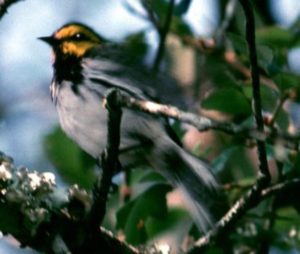
A golden-cheeked warbler.
Besides the golden-cheeked warbler, there’s plenty of other wildlife in the park. There are coyotes, blue herons and a vulnerable bird called the black-capped vireo.
There are also a few remnants of human history in the park. There’s an old dam in Palo Pinto Creek with a pump house nearby, that was used to send water up to the railroad and fill steam engines. There’s also an old campsite that Indigenous groups used to use.
Excavators found a fire ring marking the campsite, 6 feet below the surface. They found other fire remnants at different levels in the soil. Years and years of fires, all within a few feet of each other.
Adams said that was one of his favorite finds.
“People had been using that campsite for generations, and they weren’t using Google Maps to get back to that spot,” he said.
‘Y’all Come Back’
There’s still a lot to be done before the park opens to the public.
The roads need to be paved. Exposed natural gas lines, left over from the land’s ranching days, need to be buried — and, of course, buildings need to be built.
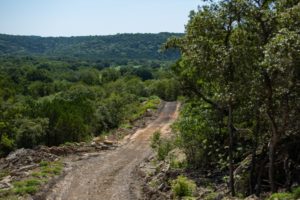
The mountainous, dirt roads will soon be paved for visitors to drive through the park with their cars.
The Texas Parks and Wildlife Foundation has raised $6 million of the $9 million needed to construct a visitors center and other facilities. They’re looking for more donations to cover what’s left.
Once the park opens, one of the first things visitors will see is a sweeping view of the hills from a road built along a ridge. That was on purpose — to awe people on their way in and out.
Adams calls it the “y’all come back” view.
“Instead of a sign that says ‘y’all come back,’ we’ll just give them this,” he said.
Got a tip? Email Miranda Suarez at msuarez@kera.org. You can follow Miranda on Twitter @MirandaRSuarez.


